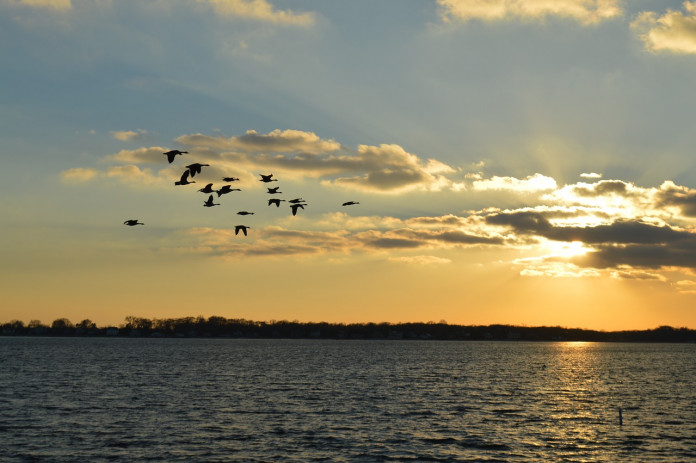The weather forecast for this past weekend called for single digit low temperatures and at least a few inches of snow. Sounds like a good time to stay home and cocoon for a while.
So when I opened an email from a reader this week, the question seemed timely and appropriate: How do birds survive cold winter nights? It’s a great question, and its answers illustrate the ingenuity of winter survival strategies.
Birds use a variety of tactics to fight the cold. Some just avoid the cold altogether; they migrate. Southern locations offer warmer temperatures and plenty of food.
Waterfowl, warblers and hummingbirds are among the more familiar birds that head south each fall. On the other hand, competition for tropical foods can be intense, and the tropics are home to many deadly predators.
Body temperature
Migration may not be as ecologically friendly as it initially seems. The key to birds surviving cold winter nights lies in maintaining a constant body temperature. They accomplish this in the same ways we keep our homes comfortable — they stoke the furnace and insulate the walls.
Those that remain active during the winter months need lots of energy to keep warm. So they become eating machines. On mild winter days you might count a dozen cardinals, titmice, chickadees, juncos and finches using your feeders.
But on days when the high temperature barely escapes single digits, birds can overwhelm feeders. On such days, I’ve counted more than 100 birds at my feeders.
Many birds roost at night in dense vegetation, which protects them from snow and cold winds. Tangles of briars, grape vines and brambles protect birds from all but the most severe conditions.
Greater protection
Conifers and ivy-covered walls offer even greater protection. This is a sound ecological reason every backyard wildlife sanctuary should include some evergreens.
And cavity-nesters such as screech-owls, woodpeckers, wrens, chickadees, bluebirds and nuthatches sleep in cavities much like the ones in which they nest.
Often these birds use nest boxes as winter roosts.
Some species, such as chickadees, prefer to sleep singly, while sometimes eight or more bluebirds will cram into a single cavity and share their body heat. Other avian sleeping arrangements are a bit more unusual.
Some ducks sleep while floating on the water. And when there’s deep snow cover, ruffed grouse sometimes plunge into snowdrifts, where the snow itself insulates the grouse from plummeting outside air temperatures.
Fluffing feathers
Birds also retain their body heat by fluffing their feathers to increase their insulating value. This traps air, an excellent insulator, just like a down jacket.
You’ve probably noticed that on very cold days birds look much bigger than usual. Chickadees, blue jays and cardinals are especially good “fluffers,” but most birds do this to help stay warm.
Another reason birds seem bigger when fluffed up is that they actually have more feathers. Birds that live year-round in areas that get very cold grow more feathers for the winter months.
For example, in one study conducted in February, two white-throated sparrows had 2,556 and 2,710 feathers while two individuals taken in October had 1,545 and 1,508 feathers.
In another study, a Carolina chickadee taken in February had 1,704 contour (body) feathers, while another taken in June had only 1,140. And in a study of feather mass, common redpolls had 31 percent heavier plumage in November than in July.
Clearly, more feathers trap more body heat and keep birds warmer during cold weather. Another fascinating way to deal with cold temperatures can be found among poorwills, a southwestern bird related to whip-poor-wills.
Hopi Indians called them “sleeping ones” because they could be found comatose among rocky walls on cold winter desert nights. Their body temperatures plummet, and their breathing and heart rates drop; they survive the winter in a torpid condition.
A variety of western hummingbirds can do the same thing on cold summer nights at high elevations.
So fear not. For birds on cold winter nights at mid-latitudes, survival is a piece of cake.













